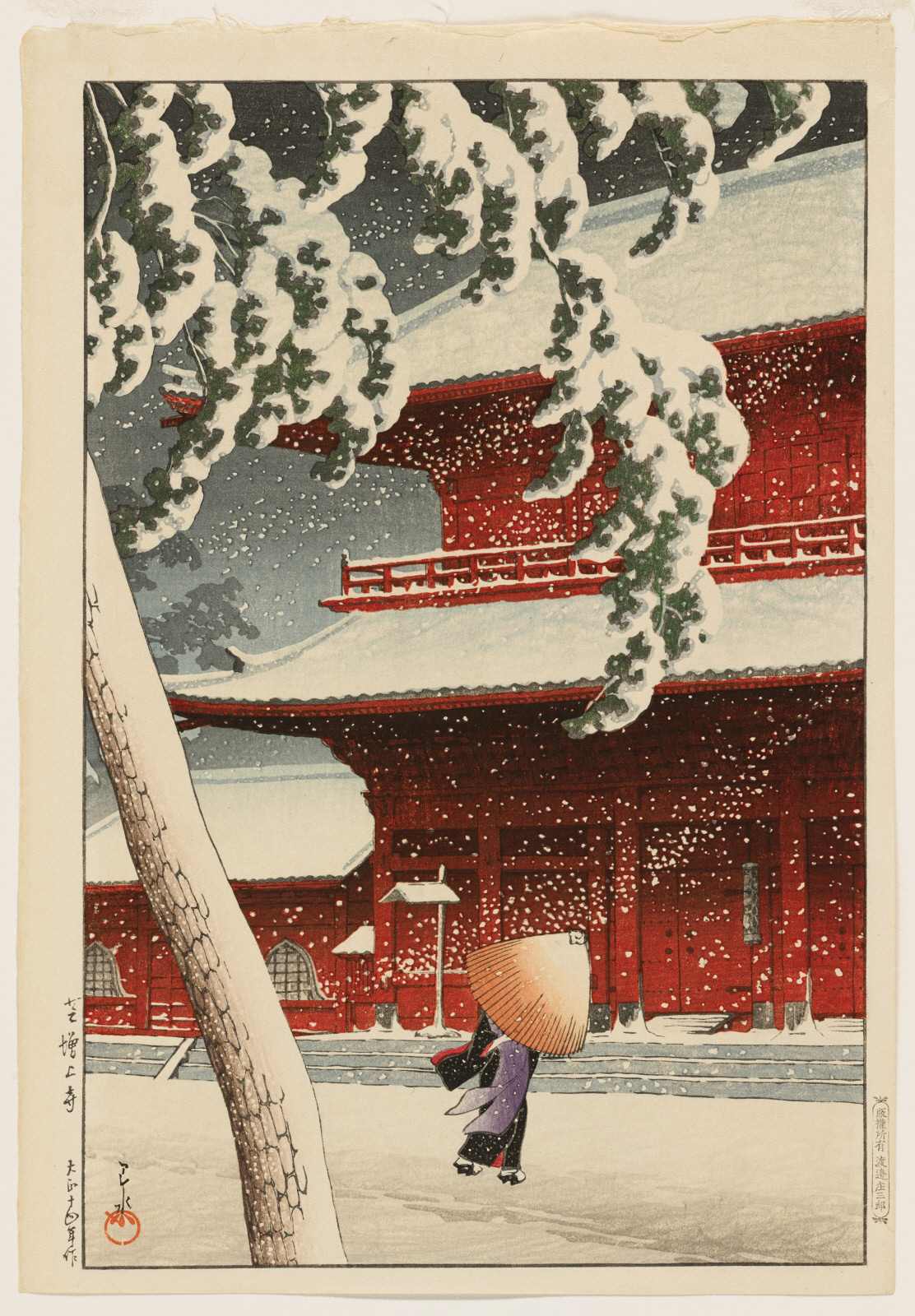 Kawase Hasui, Zōjōji Temple, Shiba, 1925, Taishō 14, Color woodblock print. Gift of the Rodbell Family Collection, 2014. The Clark Art Institute, 2014.16.26.
Kawase Hasui, Zōjōji Temple, Shiba, 1925, Taishō 14, Color woodblock print. Gift of the Rodbell Family Collection, 2014. The Clark Art Institute, 2014.16.26. Shin-hanga
 Kawase Hasui, Zōjōji Temple, Shiba, 1925, Taishō 14, Color woodblock print. Gift of the Rodbell Family Collection, 2014. The Clark Art Institute, 2014.16.26.
Kawase Hasui, Zōjōji Temple, Shiba, 1925, Taishō 14, Color woodblock print. Gift of the Rodbell Family Collection, 2014. The Clark Art Institute, 2014.16.26. Shin-hanga
Conceived as a restaging of the ukiyo-e tradition in the twentieth century, the shin-hanga (new prints) movement looked to the past to depict the contemporary. The picturesque views of meishō (famous places) by Kawase Hasui, lyrical landscapes by Tsuchiya Koitsu, and dusk-shrouded street scenes by Yoshida Hiroshi incorporated both ukiyo-e and Western landscape conventions. Working in an intense period of modernization and Westernization, many shin-hanga artists appealed to consumers by creating works that evoked nostalgia for a premodern Japan.
Following the model established by ukiyo-e printmakers during the Edo period, the majority of shin-hanga were created through a collaborative process. Work was divided between the artist, carver, and printer, and guided by a publisher. The most prominent publisher in this movement was Watanabe Shōzaburō, whose offices in Japan and London, as well as distribution routes to the United States, facilitated a renewed fervor for Japanese prints.
.jpeg)